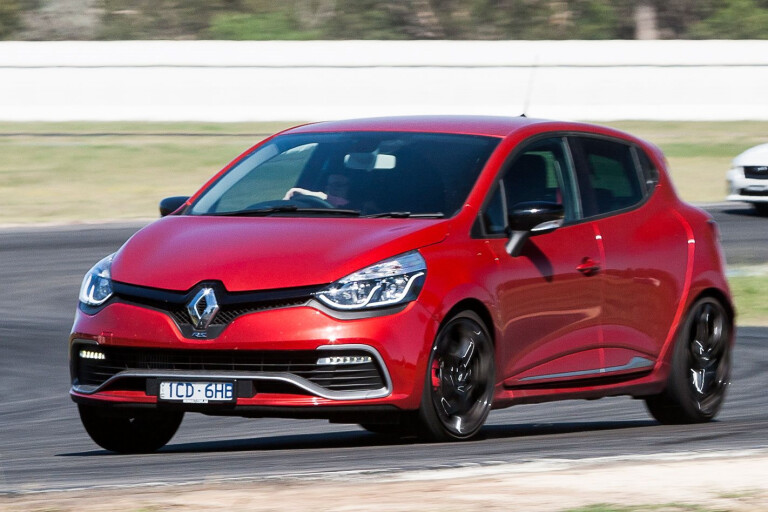
MARRIAGE material is not someone who, after 20 minutes on the first date, turns out to be shallow, frustrating and a bit dull.
For romantic partners it’s fair to say we all want someone with a little darkness and mystery – a personality that’ll take time to unravel. Of course, a nice chassis helps, too. Which brings us to cars.
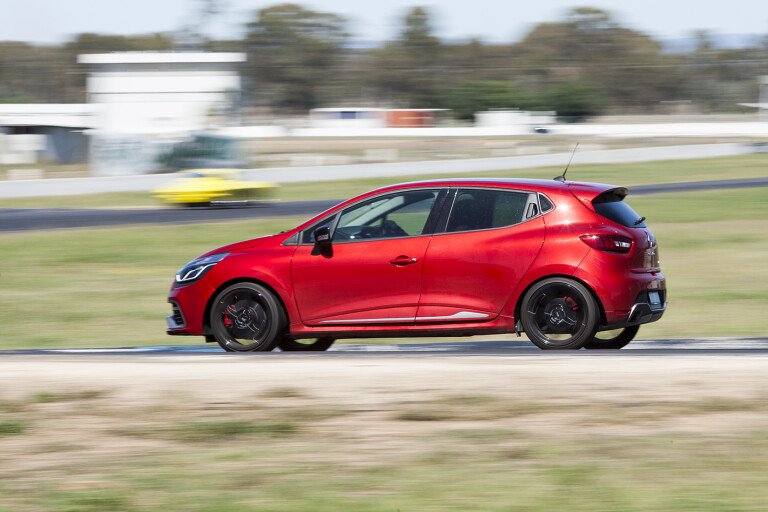
Nobody wants to do two laps of a racetrack to find their newfound four-wheeled performance lover has crap steering and a talent for understeer. You want to know that, five track days later, you’re still figuring it out, that perhaps the car is better than you are.
So hallelujah, after a Friday spent at a Winton track day we can confirm our Clio RS has a depth of chassis character that’ll take several track days, or Warren Luff’s brain, to properly understand and expertly exploit.
Through Winton’s slower hairpins around the back of the circuit, beyond limits there isn’t much more going on than understeer, but through Winton’s faster crooked bits, like turns three and four, the Clio will predictably oversteer on corner entry with an aggressive and calculated steering flick. It’s hilarious fun and you’ll be wishing such corners were all Winton was made of.

Meanwhile the Clio’s chassis displayed such depth and ability that it had us wondering if the nuts holding the wheel, rather than the car, were the things holding it back the most. The Clio had us arguing the quickest way around Winton’s fast turn five. I was able to drive, throttle flat, straight into the sweeper and worry about the turning and braking late in the corner.
But associate editor Scott Newman proffered the slow-in, fast-out technique was the way to slice tenths around Winton in the Clio. Either way, the Clio’s great chassis ensured many of the limitations for going fast were the pilot and not numb steering or diabolical understeer – the case for so many “performance” cars.
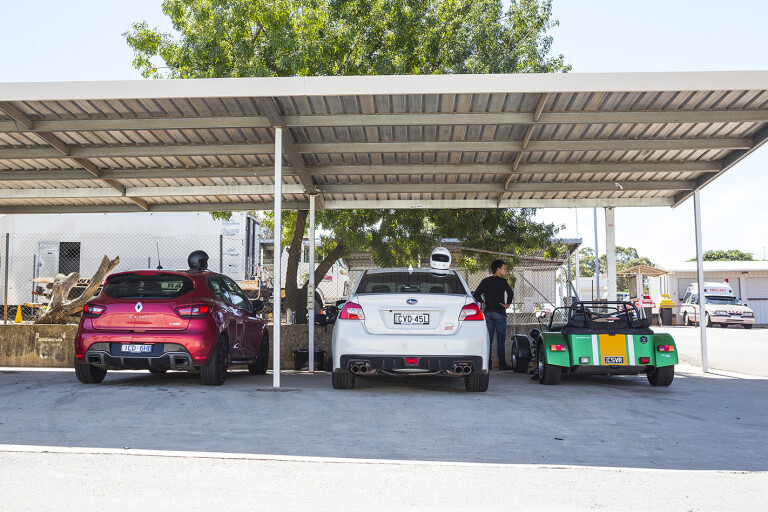
Of course, this love affair isn’t without turbulence. The Clio’s chassis still teeters towards understeer and unlike the playful Fiesta ST, or indeed the Clio RS’s predecessor, it takes reasonable-sized gentleman vegetables to solicit pre-apex oversteer in the Clio. It feels like the wheelbase is half a metre longer than the old naturally-aspirated Clio, when in fact it’s just 4mm longer.
Meanwhile the 2.7 turn lock-to-lock electric steering is sufficiently fast and feelsome on track, even if to use it’s more satisfying than stunning.
The seats, too, were great on track, holding us all in place well and giving fantastic control of the big round thing. The Clio RS earns brownie points for full ESP deactivation, too, and good power-down despite the lack of a proper diff (it has a faux LSD, braking the inside wheel).
The brakes held up strongly, too, even if MOTOR is sympathetic on the anchors when there’s no stopwatches involved. Don’t get us wrong, we give the brake pedal plenty of hammy, but we’re not kissing ABS every braking zone.
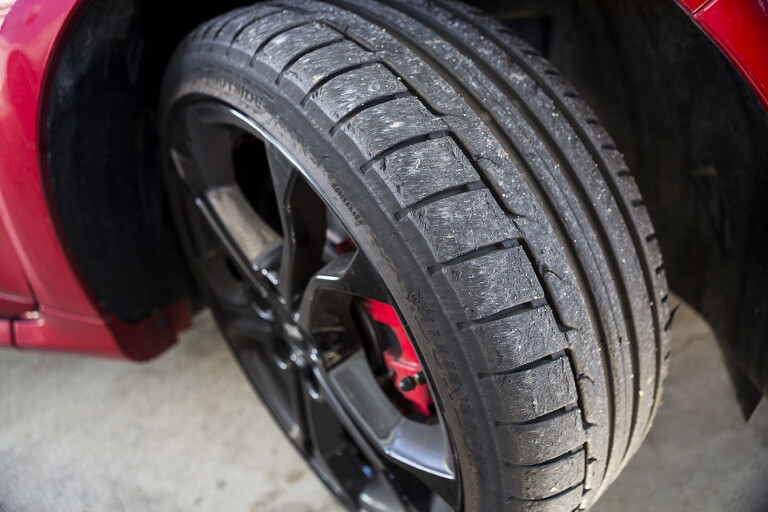
Meanwhile the tyres were absolutely fine after around 30 or so laps, and that’s in 30-odd degrees of ambient temp.
There was one core criticism levelled at the Clio RS from our track day: the engine and transmission are boring. Yeah, it has 147kW and 240Nm but down the straights we were checking the rear vision mirror for a drag chute.

The shift paddles really need to be on the steering wheel, too, rather than the steering column. Ferrari puts them there so that, when you’re power oversteering your F12 in second gear and need to grab third, you always know where the paddle is. Renault’s reason? Not sure, but we dare venture it’s a little different.
Three months into the relationship our Clio RS has revealed a talented track day chassis. Next month we pontificate if the sawdust-y engine, and that auto, are marriage makers – or deal breakers.
UPDATE #1
By Dylan Campbell
WOULD the latest generation Renault Sport Clio be better as a manual? Having acclimatised to its interior, this is something surely natural to wonder, particularly if you’re a fan of previous generation Renault Sport Clios.
With 7000km on our long-term Renault Clio now – more than enough to bed in the twin-clutch – we would describe the auto tranny, generally speaking, as good rather than great. At low speed the clutches engage sometimes a little too enthusiastically, but in “Normal” mode gear changes are appreciably lazy like any auto.
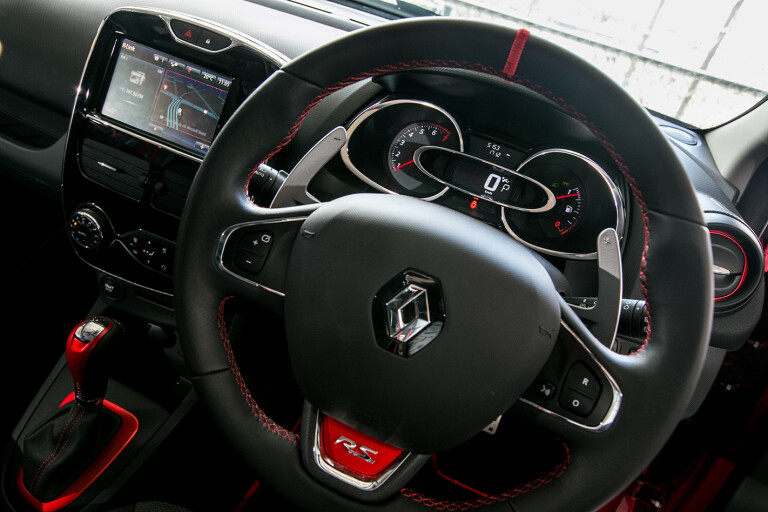
Put the thing in “Sport” mode and the shifts quicken significantly, to the point where you’ll get a cool DSG-like fart on upshifts. It’s great fun changing up gears although down gears, sometimes you find yourself wanting a gear a little earlier than it’s willing to give you.
Sadly the paddles are strangely unsatisfying to use, too, like the way they click is too soft, and they really need to be on the steering wheel, not the steering column. Yes, you’re right, you should try to change gears in a straight line, but sometimes when you’re just being a bit of a wally and having fun – you decide, mid-roundabout, that yes, you will knock down a gear and blast out – you have to take a hand off the steering wheel, loaded-up mid-corner, to change gears. Not ideal.

Renault Sport’s switched-on engineers will undoubtedly make their Clio’s twin-clutch ’box better with time, but there’s an even easier way to fix this: put in an extra pedal and an H-pattern gear knob.
This generation Clio RS would be such a great car if it was manual, particularly as Renault Sport know how to make ’em (take a Renault Sport Megane for a spin). If this Clio was manual, suddenly the drivetrain would be as interactive, engaging and fun as the chassis, and you would have one seriously cracking car on your hands – with the practicality of four doors, ample rear leg room and a boot.
The fact it changes gears itself aside, I do quite like the Clio’s interior, particularly in our admittedly-getting-pricey, options-plump $37,490 Cup Premium trim (better stereo, reversing camera, heated seats, leather).
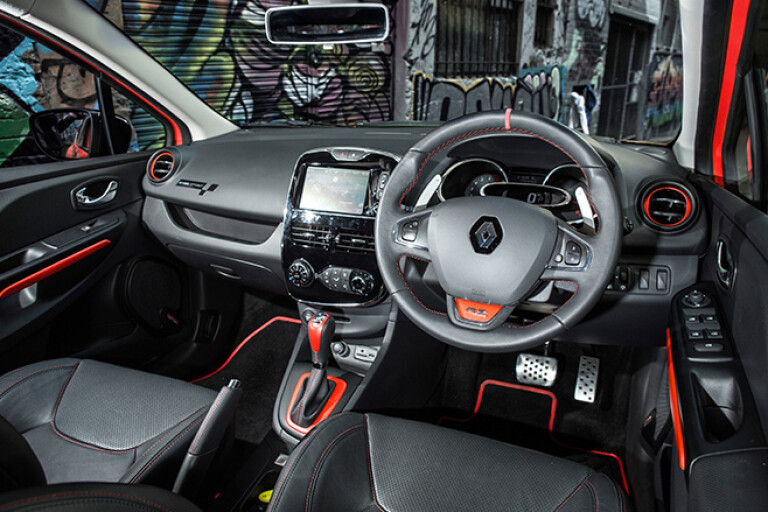
I appreciate the big digital speed readout. I love the driving position, which is something I never thought I’d say about a small French car (do the French have legs? If you’ve ever tried to get comfortable in a Peugeot RCZ, apparently not). The seats hug you nicely, yet aren’t too firmly padded. Tick, tick and tick.
The Clio’s interior hasn’t been perfect, though. Some staffers think it feels a bit low rent in places. We think the centre screen’s ‘RS Monitor’ (the Nissan GT-R-esque feast of digital gauges) is a cool toy, except, maybe once in five times we go to use it, it’s totally drawn a blank! It shows the gauges but sans any information. You need to turn the car off and on to get it to work again.
That aside, hand on heart, I’m really liking the little Clio. During extended periods where I’m driving other cars, I look forward to getting back in the Clio for the daily commute. It rides pretty nicely, yet is agile and fun through a roundabout.
After 12 hours of emails and meetings I do appreciate that it can change gears by itself, but still I can’t help but fantasise what it’d be like as a manual. I suspect it’d be awesome.
Update #2
By Dylan Campbell
CAN you hear that?” I shouted at my knee, beside which I held my phone. I was trying to get it as close to the door speakers as possible, so the phone would catch an audible whiff of fake motorcycle noise.
Perhaps tens of thousands of ears were beside my knee as I sat in MOTOR’s Renault Sport Clio long-termer. I was doing a radio interview, the presenter transfixed by the idea some car companies are plumbing fake engine noise through car speakers these days.
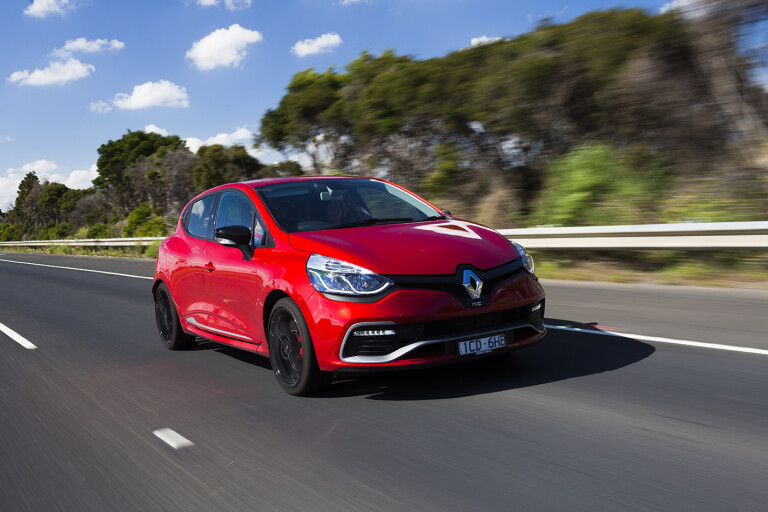
Of course, Renault isn’t the only one. BMW is faking it, so is Peugeot, Ford and more. New turbo engines generally sound so vanilla that car companies – Ferrari and perhaps Porsche aside – have given up fiddling with intake and exhaust hardware, instead plumbing unapologetically artificial engine noise through the stereo.
But it must be said that Renault is having the most fun with it, as your index finger will find if it hunts around a Renault Sport Clio’s dashboard menu long enough.
And hunt long it will, given the French fixation on overcomplicating an interior as if in some sort of rebellion against ergonomic homogenisation. Renault, too, couldn’t resist with the Clio RS’s labyrinthine dashboard menu, which would cause a German engineer to pull hair out in fistfuls.
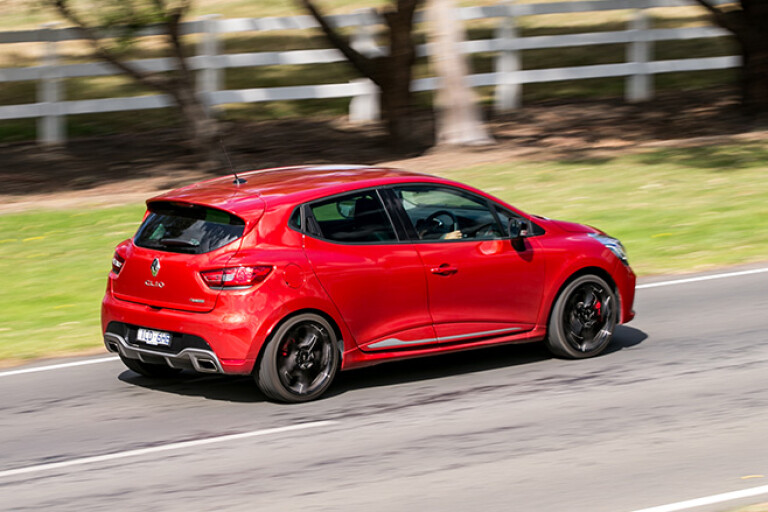
When you do eventually find the fake engine noise menu, there’s a platter of artificial engine notes, from Nissan GT-R to 1930s Renault Vivastella. But the one that’ll have your passengers erupting in guffaws is the 2038 Renault Reinastella – a fictional Jetsons-inspired hovercar. (Or Renault’s product planners dropping a hint.)
There’s also a Clio Cup car, Clio V6, Alpine A110 and a Renault 8 Gordini.
The volume of each is adjustable but they sound a little too fake to be enjoyable, such that you’ll soon be reaching for the off button. Except the motorbike. You might leave that one on for a bit, as it sounds the best, oddly.
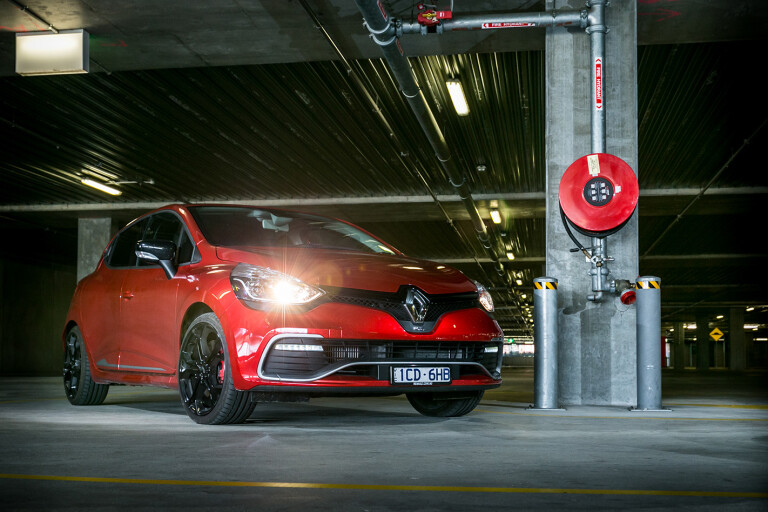
But while fake engine notes are easily disabled, the same can’t be said for the artificial note Renault plumbs permanently into the Clio’s cabin – a bassy, rumbly low-down burble that only really makes itself known with a generous throttle input away from the lights, and helps to hide the engine’s otherwise pretty sawdust-y note.
Pop the Clio in Sport mode and the stereo engine noise climbs an octave. Truth be told, it’s subtle enough that it does add some welcome herbs and spices to the experience.
Stereo-assisted engine notes are about the most interesting thing that’s happened to 1CD6HB this month, accruing 1300 urban kilometres despite the promise of an alpine punt.
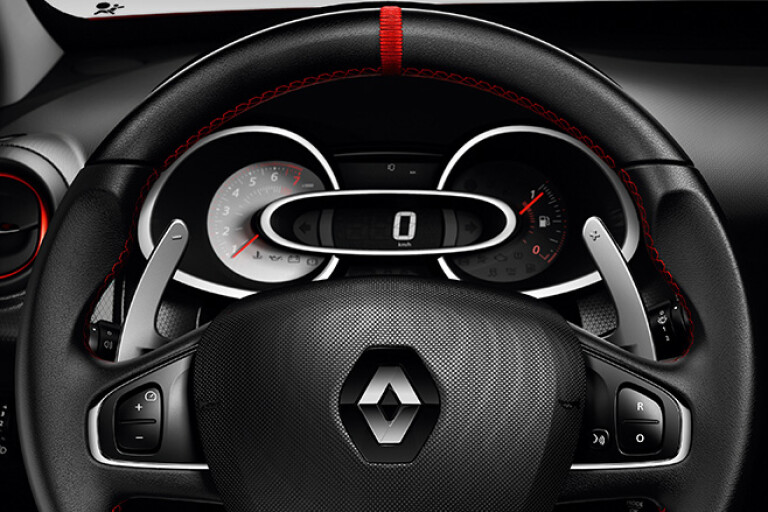
Personally I’ve spurned other test cars just to stick to the Clio, and I’m still enjoying the daily commute for reasons mentioned last month. And as Melbourne plunges into winter I’m appreciating the Cup Premium’s seat heaters, too.
There are things that make me wince, though, mostly the passenger headrest rattling non-stop, which I’ve tried half a dozen futile times to adjust. Moving away from a standstill, if you’re not leisurely with your throttle tip-in like your right leg is half-tranquilised, the clutches engage with a jolt that goes through the car. We’ve driven twin-clutches much smoother.
The Clio’s EDC auto gearbox, too, can get itself in a muddle, particularly down hills where it seems to dip the clutch as you lightly brake, but then when you resume accelerating, can lurch as the revs match the wheel speed again.

We’ve noticed, too, even in top-spec Cup Premium trim, our Renault Clio RS spurns a spare wheel of any size for a can of goo. Which, if we’re honest, makes us think twice about the alpine jaunt.
But only twice, and the answer is still yes, as the Clio is begging to stretch its talented little legs. As our time with 1CD6HB wraps up, a trip across the mountains for next month’s issue seems a fitting farewell. It seems appropriate, too, we select the Alpine from the fake exhaust noise menu. Even if we can only stand it for two or three gears.
Update #3
By Dylan Campbell
After six months it’s time to bid hooroo to our Renault Clio RS200 Cup Premium and I’m confused whether I’ll miss it for being a great car, or just because as someone who is, how do I say, “between” cars, I’ve harboured unattached affections to which the Clio was ripe for receiving.
Having all my adult life tended to grow sentimentally fond of four-wheeled fast things, I suspect my rosy feelings towards 1CD6HB teeter more towards dumb affection than reverence.
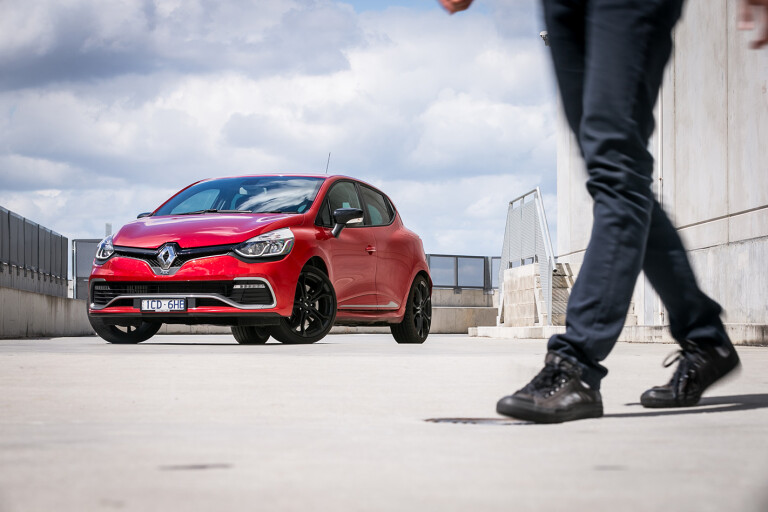
That’s not to say I don’t think it’s a good product. I very much think it is. Particularly after a blast through the foothills of Melbourne’s easterly alps this month, where despite a suspected dud tank of fuel putting the brakes on power output, said Renault, we were reacquainted with the Clio’s fondness for going rather fast through a corner.
But let there be no doubt about two things: this generation Clio just isn’t as plain thrilling as its three-door, naturally-aspirated, manual predecessor. And that this new generation is an easier, more comfortable car to drive on a daily basis. So the question remains is it a better all-rounder and, if I could, would I sign up for another six months?

I wouldn’t mind a punt in the new Volkswagen Polo GTI first. I’d be silly not to, if I was in the market for an automatic, four-door front-driver – which might suggest I do a bit of commuting. Its 141kW/250Nm (in DSG-spec), is more or less the same as the Clio’s 147kW/240Nm.
They both claim 6.7sec to 100km/h. And, though I haven’t even sat in the new Polo, I suspect it’d have a more polished interior and a sharper, sweeter twin-clutch ’box. As for goodies, gadget fetishists can tick two options packs costing $5K which up the frill ante, and still you’d pocket $2500 over the plump Clio RS Cup Premium.
But during a yak in the office associate editor Newman postulated the Polo just wouldn’t be as much fun on a track. Fast, sure, but fun? That’s one thing the Clio’s absolutely got going for it.

Our track day at Winton showed that, in the Clio, you’ll be looking at your wristwatch down the straights, such is the slightly hohum powertrain, but come a corner and the thing will tip easily sideways. And depending on your level of skill, after 20 laps you might feel like there are depths to the Clio’s chassis necessitating time, patience and experimentation to unravel, as opposed to some wobblier self-titled performance car you’ll ‘get’ after five corners.
Its suspension bits did, after all, come from the same people who made the bewitching Renault Megane Trophy R.
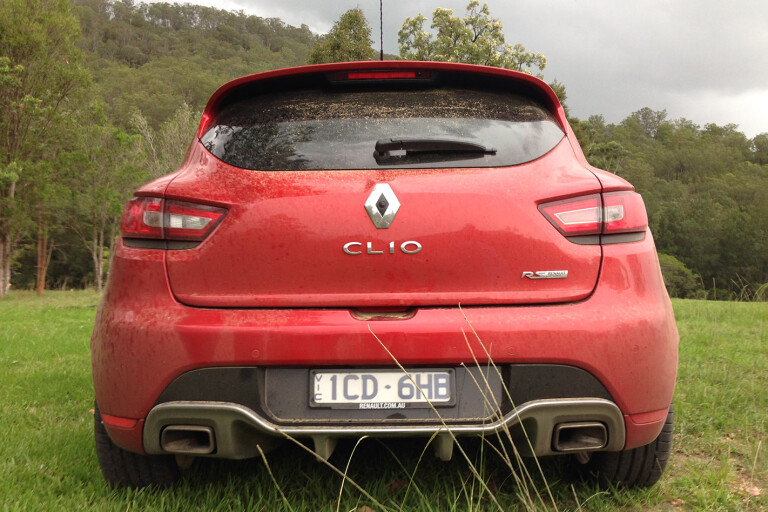
Having spent six months in the Clio and 10,000km, it’s a doddle during the commute, too. I’ve raved myself senseless about the seating position – it just seems to fit me right – and I quite like the steering, a nice rack speed for about town.
The ride is generally nice enough though drive over a patch of dodgy road and you’ll know it. Perhaps my only day-to-day bugbear was a rattling headrest to which I practised my skills of scorn, and some gearbox clutches which could occasionally engage with an intolerable jerk.
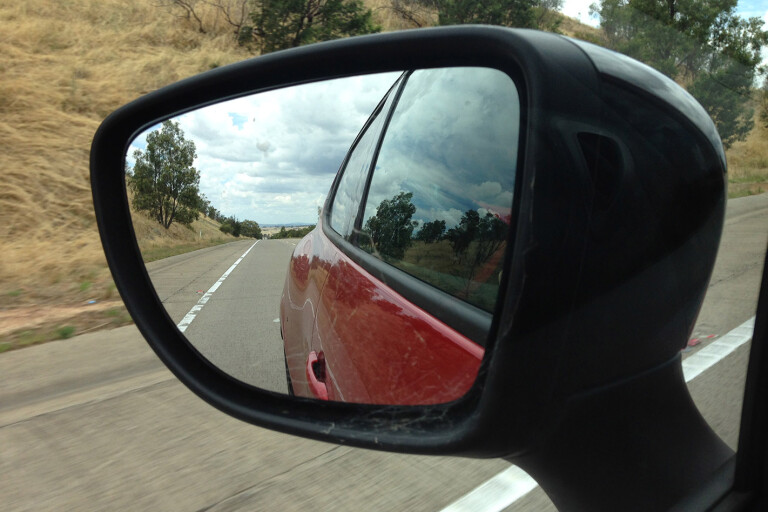
So after all this time, we can say, do you just want front-drive thrills, but care less about a flash interior and back doors? Get the Fiesta ST. But kinda want back doors and an auto? The Polo GTI is surely a nicer place to sit, but if fun rules your world, the Clio seems the best bet (we’ll find out for sure at Bang For Your Bucks).
After six months perhaps the best advice we can offer is drive the $29K Sport before the $37K Cup Premium – and if you can forgo a few frills for no less thrills, put the $8K into the Megane Trophy R fund.
COMMENTS